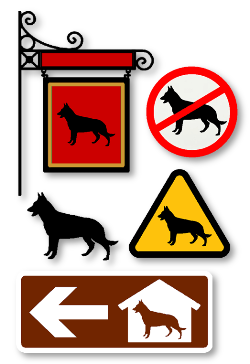
Outline and discuss the role of both code and context in making sense of pictorial public signs such as roadsigns.

Guidance
For general guidance about what is expected in your essays for this module, see the general criteria.
|
What Key Features Do I Look For?
|
Please remember to avoid footnotes and to include an alphabetical list of 'References' which have been cited in the text (not a Bibliography of anything you have read for the essay). This list should include author's names, date, book titles (in italics), place of publication and publisher. Within the text always cite author's surname, date and page number. Double-space your text and number your pages. For more detailed notes on writing essays in this department, click here.
Advice for this particular assignment: Identify the kinds of codes and contexts you are referring to (e.g. particular kinds of textual codes and particular social, locational or situational contexts). In the case of interpreting road signs, the locational context is crucial - the (strongly) 'preferred meaning' of most road signs depends on them being in the appropriate place: for instance, a crossroads sign being just prior to where roads cross (rather than, for instance, on a student's wall, for instance). However, each roadsign also makes sense by virtue of being in relation to other signs within the system of roadsigns rather than as an isolated sign (so, for instance, a sign in a red triangle shares this feature with other signs within the roadsign system which are also 'warning' signs). Definitions of key terms can be found in Chandler and Munday (2011).
Note also that this is an assignment for which the inclusion of relevant pictorial illustrations is expected. These should be inserted electronically into your Word document rather than cut-and-pasted in. You can scan such illustrations in from print sources, save them from disk-based sources, download them from online sources (such as my Powerpoint slides) or even create them from scratch in a graphics package. Use them to help you to make points more effectively. Label each one, 'Figure 1' etc. and add a caption.
Some suggested reading
Note: Treat with extreme caution sources labelled with this symbol!


|